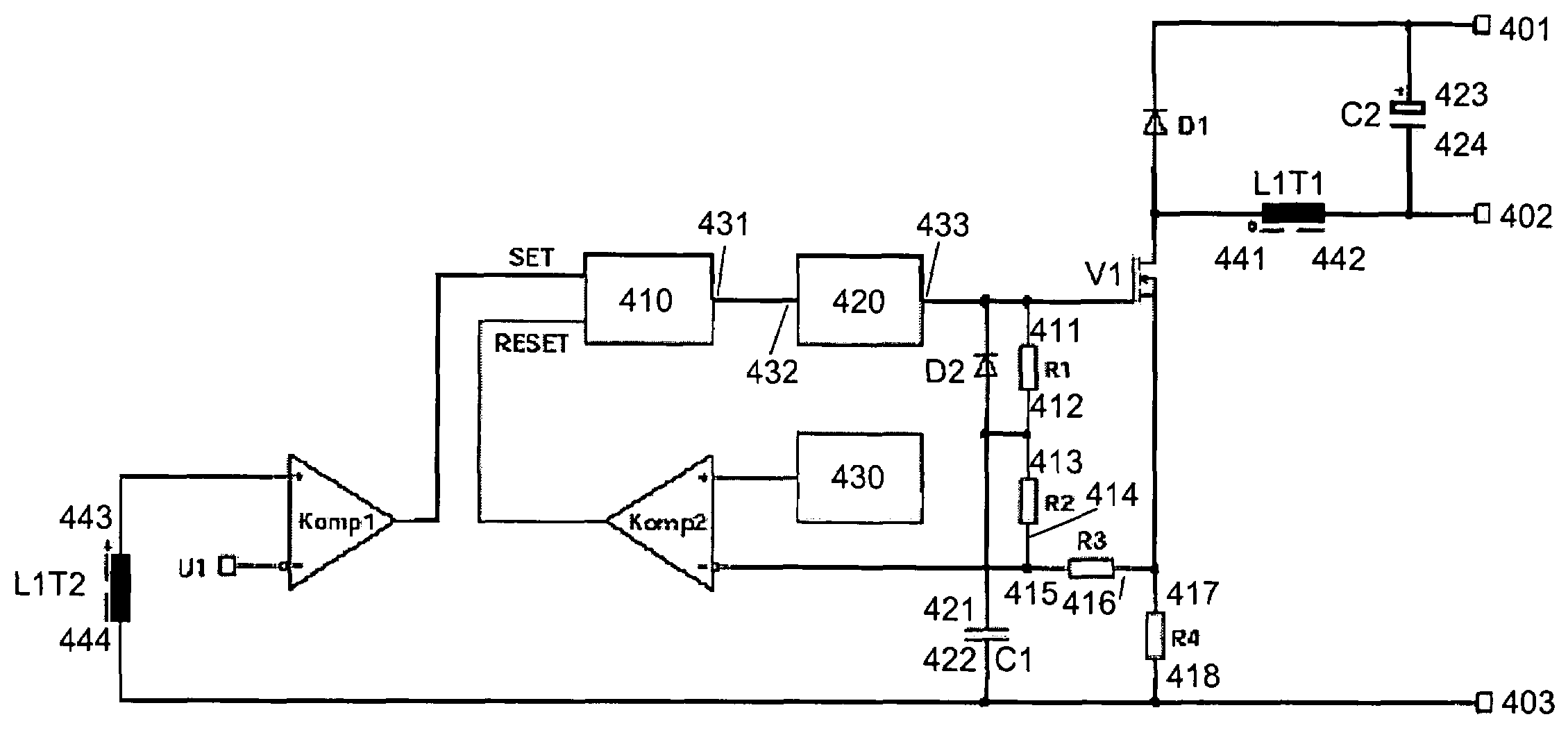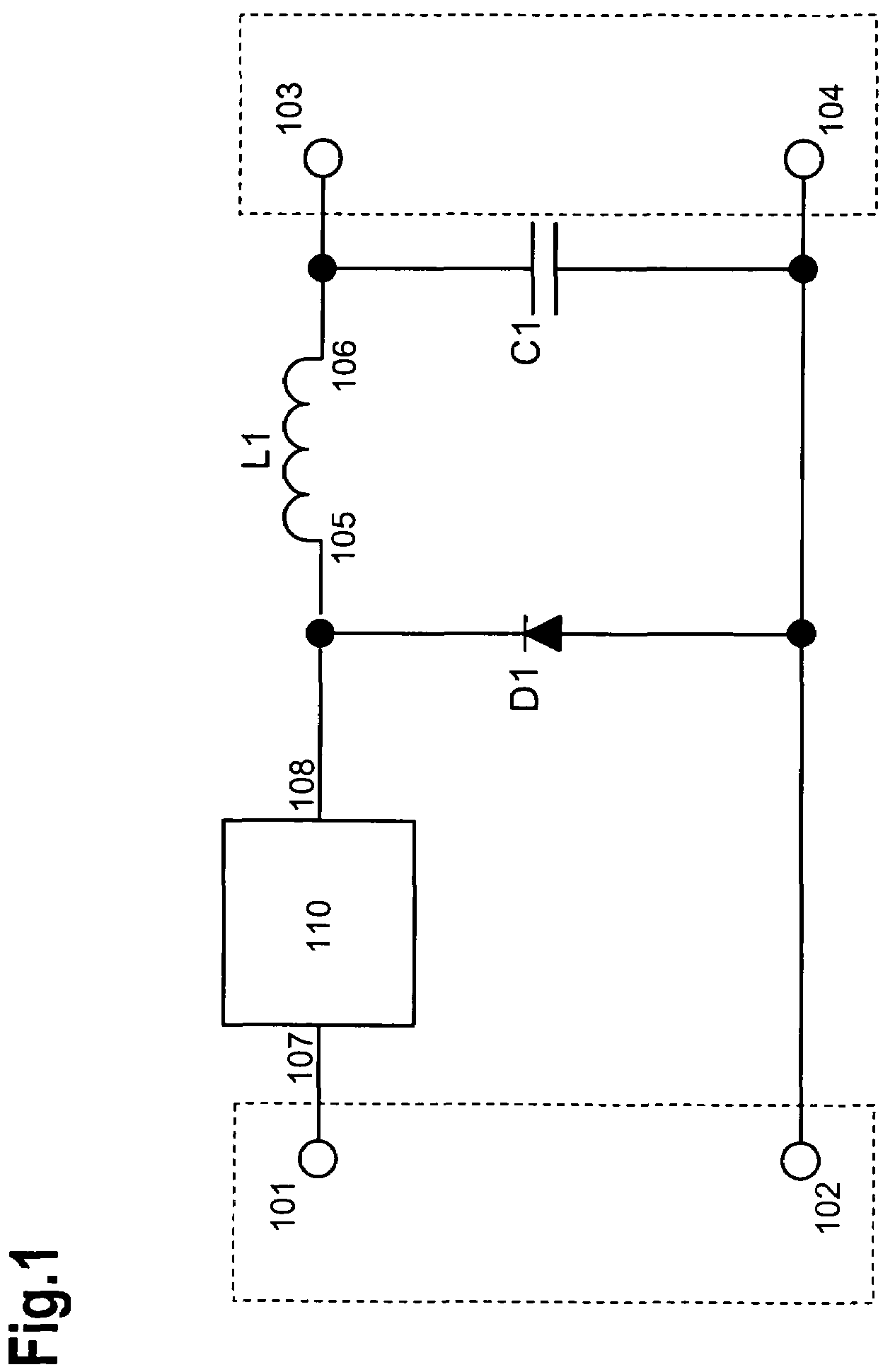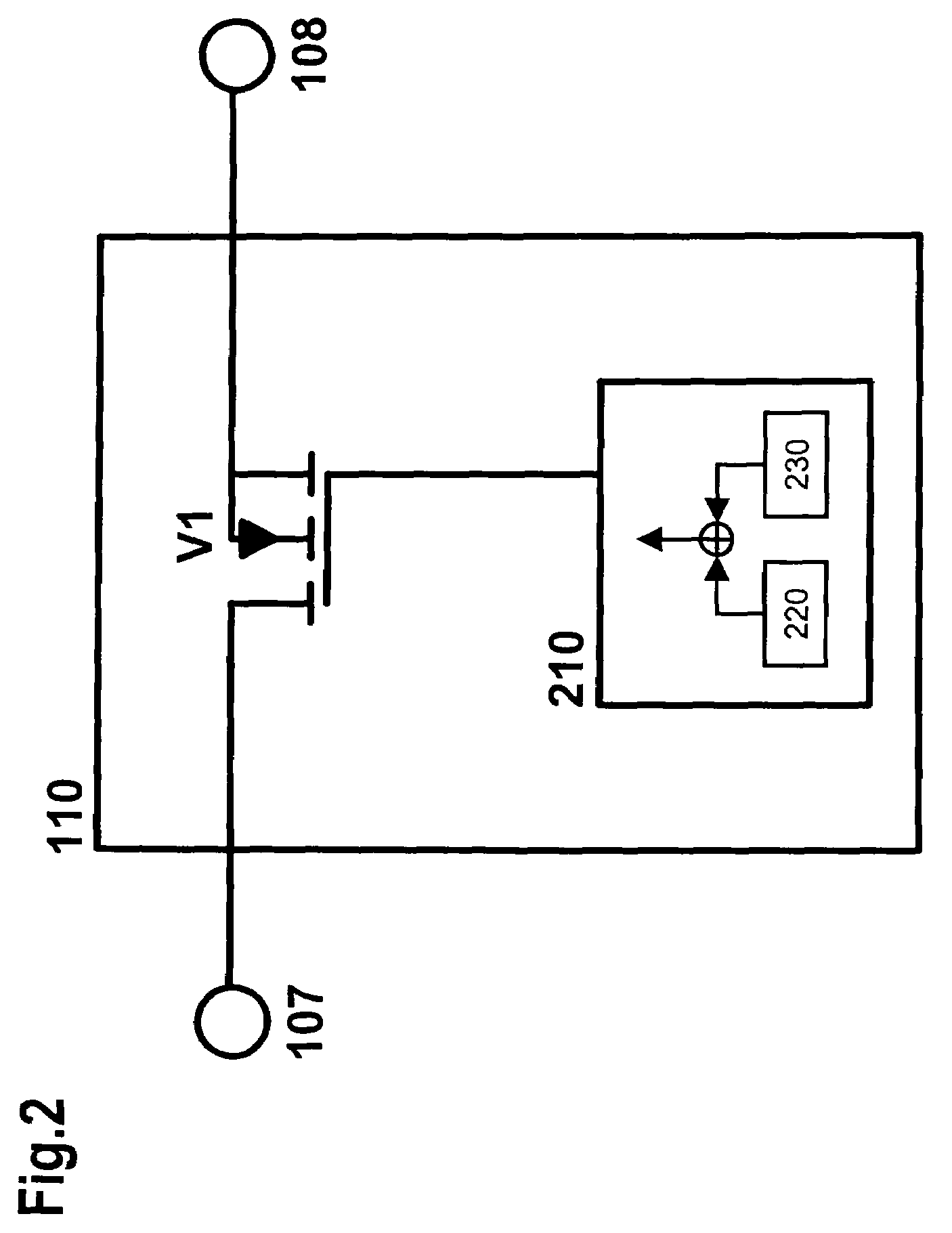Buck converter with demagnetization detection of the inductor
a technology of demagnetization detection and buck converter, which is applied in the direction of power conversion systems, dc-dc conversion, instruments, etc., to achieve the effect of reducing switching losses
- Summary
- Abstract
- Description
- Claims
- Application Information
AI Technical Summary
Benefits of technology
Problems solved by technology
Method used
Image
Examples
Embodiment Construction
[0045]FIG. 1 shows a circuit diagram of a buck converter that is equipped with an input (with connections 101 and 102), an output (with connections 103 and 104), a diode D1, a switch 110 (with connections 107 and 108), an inductance L1 (with connections 105 and 106), and a capacitor C1.
[0046]The connection 101 of the input is connected to the connection 107 of the switch 110. The connection 108 of the switch 110 is connected to the cathode of the diode D1 and to the connection 105 of the inductance L1. The connection 106 of the inductance L1 is connected to the connection 103 of the output. The capacitor C1 is situated in parallel with the output, i.e. it is connected to the connections 103 and 104. If the capacitor C1 is embodied in the form of an electrolytic capacitor, then its positive pole is connected to the connection 103 of the output. The connection 102 of the input is connected to the connection 104 of the output and to the anode of the diode D1.
[0047]Optionally, the polar...
PUM
 Login to View More
Login to View More Abstract
Description
Claims
Application Information
 Login to View More
Login to View More - R&D
- Intellectual Property
- Life Sciences
- Materials
- Tech Scout
- Unparalleled Data Quality
- Higher Quality Content
- 60% Fewer Hallucinations
Browse by: Latest US Patents, China's latest patents, Technical Efficacy Thesaurus, Application Domain, Technology Topic, Popular Technical Reports.
© 2025 PatSnap. All rights reserved.Legal|Privacy policy|Modern Slavery Act Transparency Statement|Sitemap|About US| Contact US: help@patsnap.com



